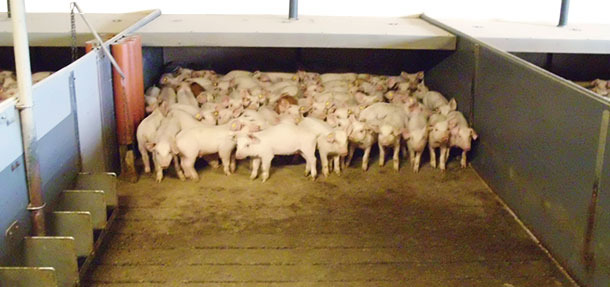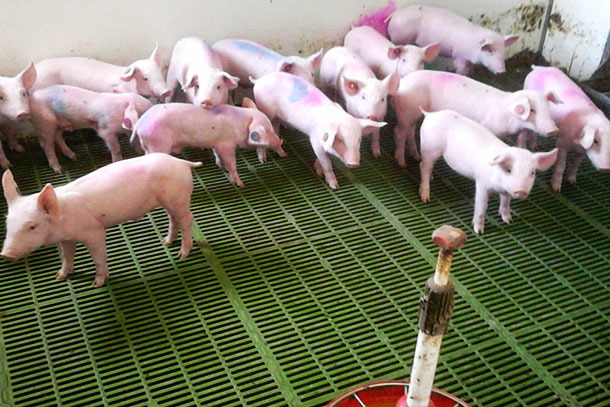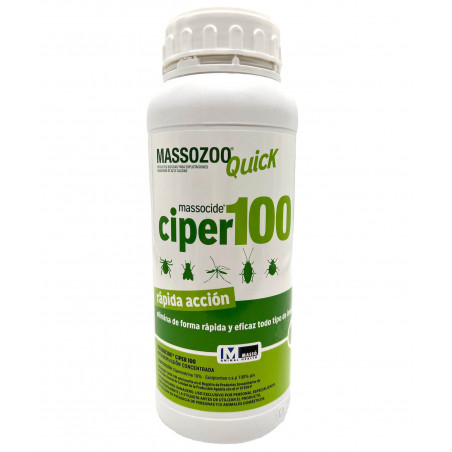The needs of the newly weaned pig haven’t changed over the years, even as weaning ages have fluctuated and our understanding of the dietary needs has improved. The goal of all weaned pig managers should be to provide a dry, draught-free sleeping area that provides fresh air, clean drinking water and an appropriate diet to support pig growth.
While it sounds easy, meeting these basic requirements often proves to be difficult in many production settings.

Warm, dry and draught-free housing
This basic requirement is often difficult to provide, especially if the pigs have diarrhoea as the result of incorrect dietary ingredients or intestinal infections such as rotavirus, or E. coli. The preferred flooring for weaned pigs in many countries is a plastic slatted flooring. However, legislation in an increasing number of countries dictates that pigs must be housed on flooring systems that are only partially slatted.
While partially slatted flooring systems allow the pig to select a lying area that better reflects its temperature and draught preferences, it also implies an inappropriate management of the pig zone temperature and air speed, that can have major consequences on the comfort and growth of the newly weaned piglet.

Photo 1. Partially slatted solid floors are now quite common on may farms. In some countries they are compulsory. On this kind of floor, the piglet can choose its resting area depending on the temperature and the draughts.
Generally, negative pressure mechanically ventilated weaned pig facilities should have their inlets adjusted so the pressure differential at the inlet is 12.5 pa (0.05 in. water gauge). This translates into an air speed at the inlet of approximately 4 m/s (800 fpm). Failure to use self-adjusting or ventilation controlling adjusting inlets means that the location of the draught from inlets varies as fans increase/decrease their speed or additional fans turn on/off. This results in varying locations of draughts in the pig zone resulting in the animals having to constantly change their sleeping and dunging locations in response to the shifting of comfort zones as ventilation varies in response to outside air temperature changes.
Because newly weaned pigs often have a limited feed intake for the first 1-3 days post-weaning, the generation of body heat as a result of tissue growth is limited. This lack of heat production has to be made up for in the housing provided. For fully slatted facilities the goal is to provide 30ºC in the draught-free sleeping area of the pen until the pig consumes enough feed to once again be in a positive energy balance with regards to metabolic heat. Once feed consumption (and metabolic heat production) increase it is commonly recommended that the target air temperatures are lowered 2-3ºC per week to maintain the pig within its thermal neutral zone. In the US ventilation controllers are often set to lower this temperature by 0.28ºC (0.5ºF) per day.
Because of the lack of metabolic heat output due to lower levels of dietary energy intake in the first days after weaning, the newly weaned pig is very sensitive to temperature fluctuations. Evidence suggests that hourly temperature variations of more than 2ºC result in a decreased daily gain and increased variation in gain when they occur in the pig zone during the first weeks after weaning.
Once weaned pigs are eating well there are good data supporting the use of a reduced nocturnal temperature regimen. Given a choice, nursery pigs always demonstrate a preference for a night time (nocturnal) temperature that is 4-5ºC cooler than the temperature in the pig zone during daytime hours. In research trials they begin calling for cooler temperatures around 16:00 h and begin calling for warmer temperatures around 05:00 h. Implementation of a temperature management regime whereby the heater setting in the ventilation controller is 5.5ºC lower from 19:00 h to 07:00 h than the daytime setting starting one week after weaning has consistently lowered fuel usage by 15% in winter trials conducted in the upper Midwest region of the US.
Sorting by size and sick pens
At weaning, the variation in weight among a cohort of pigs that only differ 1-2 days in age is around 22-25% when measured by the coefficient of variation. Because of the large variation at weaning, many producers assign weaned pigs to nursery pens based on their relative size. The ‘large’ pigs are placed in pens with other ‘large’ pigs, the ‘medium’ with ‘medium’ and ‘small’ with ‘small’. While this makes for pens of uniform sized pigs at weaning, it does not result in a similar uniformity at the end of the nursery period. Research trials have repeatedly demonstrated that pens of uniformly sized pigs at weaning (within pen CV of 10% or less) have increased variation at the end of the nursery period (within pen CV of 15% or greater) while pens with large variation (within pen CV of 20% or greater) at weaning have reduced variation (within pen CV of 15-17%) at the end of the nursery period.

Another common mistake pig barn personnel often make is to leave several pens in a facility un-stocked at weaning. The remaining pens are over-stocked to accommodate the facility stocking density. The goal is to remove ‘small’ or apparent disadvantaged pigs to these un-stocked pens in the first few weeks after weaning. Often times these removals aren’t routinely done, meaning the existing pens remain overstocked while the un-stocked pens become ‘dust-collector’ pens.
Even when the pens get stocked with pigs removed from other pens, the pigs may not respond as desired. If the pen into which the pigs are placed after removal from another pen doesn’t result in the pig receiving special treatment such as a heat lamp, a special diet, a special feeder, a draft barrier, etc. the pig that is relocated in fact becomes disadvantaged since it now must compete for resources with other relocated pigs leading to social stress. The general rule should be that a pig is not relocated to a pen (often identified as a sick pen) unless something special is done with pigs in the sick pen that improves their chances of recovery and growth.
Another management failure often observed on farms is allowing pigs removed to sick pens to continue to deteriorate in body condition. When a pig is removed to a sick pen the goal should be either a marked improvement in its condition in 5-7 days followed by relocation to a ‘graduate’ pen or the decision is made to euthanize the pig in a humane manner to relieve its’ suffering. While euthanasia is difficult for many pig farm employees to carry out because of their concern for all pigs, recognition of the need to relieve a pig of its suffering is something that needs to be stressed with all barn workers.

Photo 2. The sick pens must be used so the piglets receive a special treatment. After 5-6 days, the piglets that have recovered must be relocated in other pens. The best option for the piglets that do not get well is their euthanasia.




